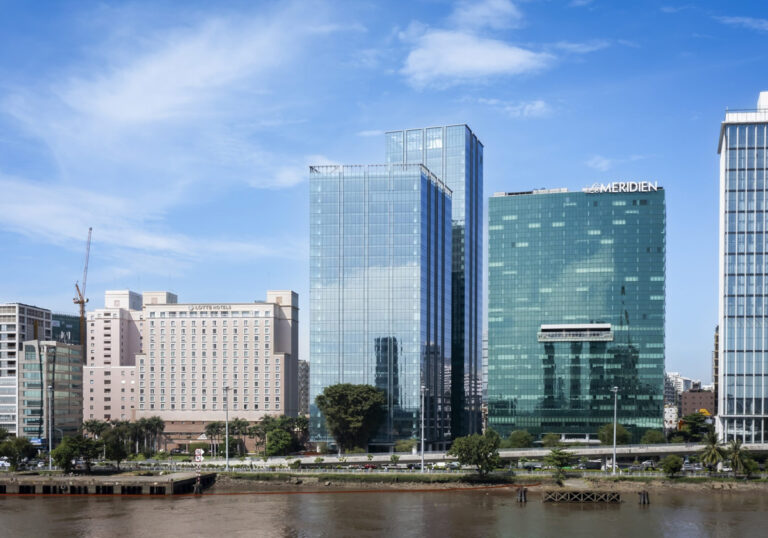Top 10 multinational companies in Vietnam

Vietnam has emerged as a prime destination for mncs. Leading multinational companies in vietnam and global multinational corporations in vietnam are expanding their footprint across key sectors, contributing significantly to the country’s growth and international integration.
Table of Contents
- What is a Multinational Corporation (MNC)?
- Why Vietnam attracts Multinational Corporations
- Top 10 Multinational Companies in Vietnam in 2025
- Economic contributions of MNCs in Vietnam
- Challenges multinational companies face in Vietnam
- Future outlook: Trends for mncs in Vietnam [2025–2030]
- FAQs about multinational companies in Vietnam
What is a Multinational Corporation (MNC)?
A Multinational Corporation (MNC) is a company that operates in two or more countries, managing production, services, or investments beyond its home country. These corporations typically establish a central headquarters in one nation while maintaining subsidiaries, offices, or factories in others to expand market presence and optimize resources.
Definition and global characteristics of MNCs
Multinational corporations, also referred to as multinational companies, are characterized by the ability to conduct coordinated business activities across several countries under unified management.

Key global characteristics include:
- International footprint: Offices, factories, or subsidiaries across two or more countries
- Centralized decision-making: Strategic control is maintained at the corporate headquarters
- Cross-border resource allocation: Capital, talent, and technology are distributed globally
- Strong brand recognition: Products and services are well-known across continents
- Compliance with multiple legal systems: Ability to navigate diverse regulatory environments
Many of the world’s leading MNCs in Vietnam, such as Samsung, Unilever, Nestlé, and Intel, have not only established manufacturing and R&D hubs but also contributed significantly to exports, job creation, and technology transfer.
Differences between MNCs and local companies
While both play important roles in a country’s economic landscape, there are fundamental differences between multinational companies in Vietnam and domestic enterprises. These differences lie in their scale, structure, strategic goals, and operational scope.

| Criteria | Multinational corporations in Vietnam | Local Vietnamese companies |
| Geographic reach | Operate in multiple countries | Operate primarily within Vietnam |
| Ownership | Owned by foreign parent companies | Vietnamese-owned and operated |
| Capital & Resources | Access to global capital, talent, and technologies | Limited to local funding and labor pools |
| Decision-making | Centralized at international headquarters | Decentralized, with local leadership |
| Compliance scope | Must follow both global and local regulations | Follow only Vietnamese regulatory frameworks |
| Technology & Innovation | Often lead in R&D, innovation, and automation | May face constraints in access to new tech |
| Market strategy | Global strategy, local adaptation | Domestic market focus |
The presence of multinational corporations in Vietnam has raised the bar for performance, employee benefits, and international standards in business practices. Meanwhile, local companies continue to play a critical role in driving innovation, agility, and deep market insight within the Vietnamese context.
Role of MNCs in Vietnam’s economy
Over the past two decades, multinational corporations in Vietnam have played a transformative role in shaping the country’s economic structure, especially in the areas of industrial growth, global trade integration, and employment development.

Here are some of the most impactful contributions of MNCs in Vietnam:
| Key contribution | Details |
| Foreign Direct Investment (FDI) | MNCs contribute a major share of total FDI; over 70% of export value and ~25% of GDP (MPI data) |
| Technology & Knowledge transfer | Companies like Intel, Samsung, and Bosch introduce advanced technologies and global practices |
| Employment & Workforce development | Create hundreds of thousands of jobs; offer training, career paths, and international work environments |
| Export-Oriented production | Major driver of exports, especially in electronics, apparel, and manufacturing sectors |
| Local supply chain development | Stimulate growth of Vietnamese SMEs and local suppliers by demanding higher standards and partnerships |
In essence, the growing presence of multinational companies in Vietnam continues to reinforce its strategic position in global value chains and make the country one of the most attractive investment destinations in Southeast Asia.
Why Vietnam attracts Multinational Corporations
Vietnam has become a top destination for multinational corporations in Vietnam thanks to a powerful combination of economic potential, strategic geography, favorable government policies, and a rapidly developing workforce. These factors have made the country one of the most dynamic investment hubs in Southeast Asia.
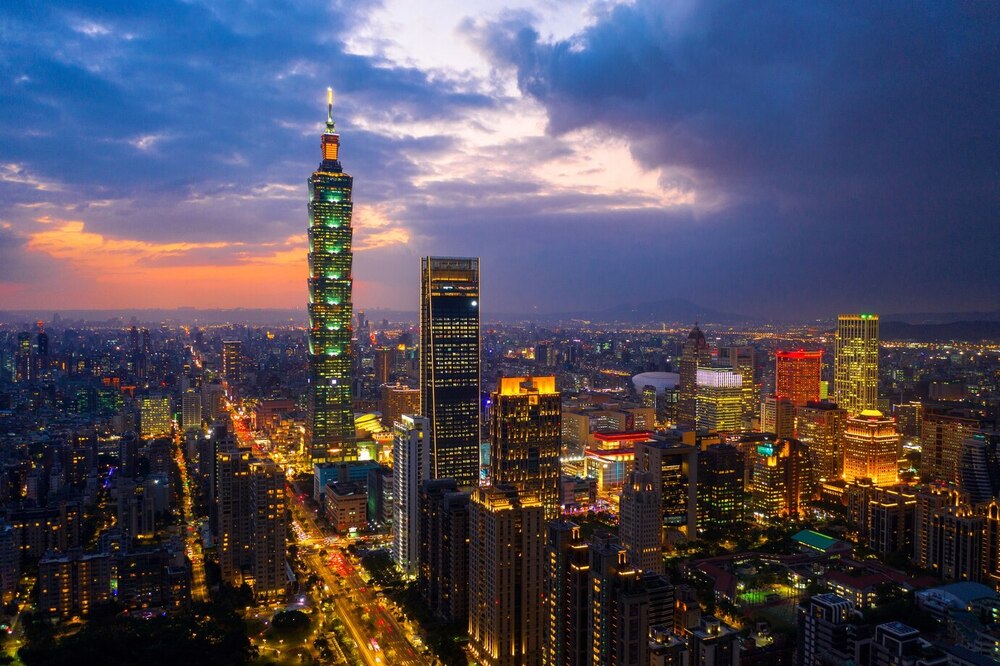
Competitive labor cost and workforce quality
One of the primary reasons multinational companies in Vietnam continue to expand their operations is the country’s balance between affordable labor costs and improving workforce quality.

Low cost, high value
Compared to neighboring countries in Southeast Asia, Vietnam offers one of the most competitive labor markets:
- Average monthly wage for manufacturing workers ranges from $250 to $350, significantly lower than in Thailand or Malaysia.
- High productivity relative to wage levels, especially in export-driven sectors like electronics, garments, and assembly.
- Favorable conditions for large-scale labor-intensive industries, such as those operated by Samsung, Foxconn, and Adidas.

Educated and growing workforce
Vietnam’s workforce is not only affordable but also increasingly skilled:
- Over 70% of the population is under age 35, providing a dynamic and trainable labor pool.
- Each year, more than 400,000 students graduate from universities and colleges, many in fields such as engineering, IT, business, and foreign languages.
- Major MNCs like Intel and LG actively collaborate with Vietnamese universities to nurture talent pipelines.

Strategic location in Southeast Asia
Vietnam’s geographic position is one of its most compelling advantages for multinational corporations in Vietnam, especially those focused on manufacturing, logistics, and regional distribution.

Gateway to ASEAN and Asia-Pacific markets
Situated on the eastern edge of the Indochina Peninsula, Vietnam shares borders with China, Laos, and Cambodia, and has a coastline stretching over 3,200 km along the East Sea. This makes it a strategic hub to access:
- The ASEAN Economic Community (AEC) with over 650 million consumers
- Major markets like China, Japan, South Korea, and India
- Emerging economies and trade routes across the Asia-Pacific region
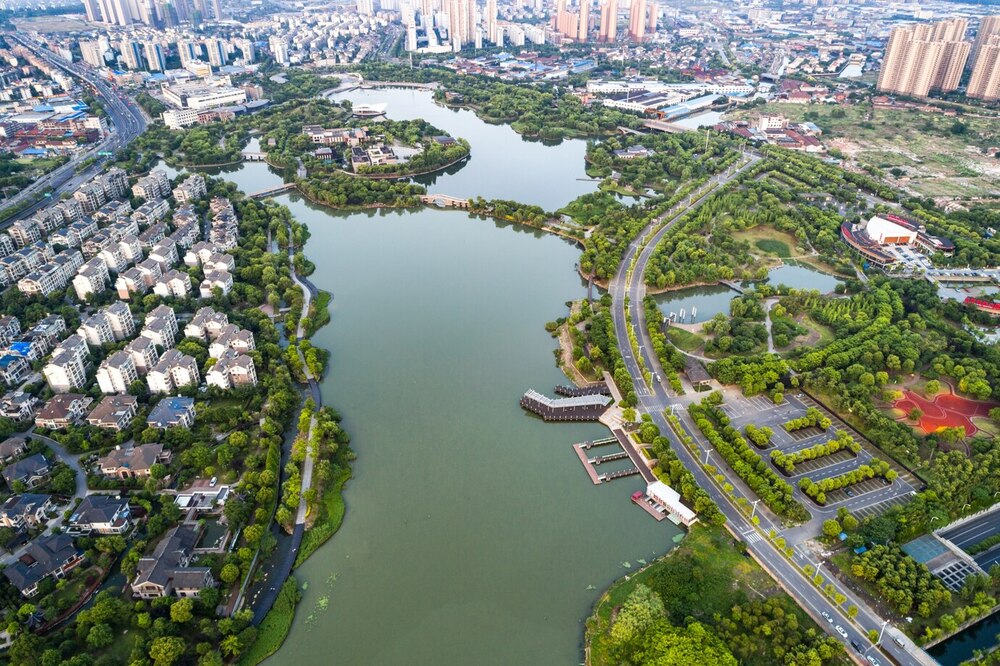
Strong Port infrastructure and logistics corridors
Vietnam is home to several modern deep-water ports and logistics zones, such as:
- Hai Phong Port (serving northern industrial zones)
- Da Nang Port (central region)
- Cat Lai and Cai Mep – Thi Vai Ports in southern Vietnam (near Ho Chi Minh City)
In addition, the government’s investment in expressways, rail, and airport infrastructure enables multinational companies in Vietnam to scale operations efficiently and ensure cross-border supply chain reliability.
Proximity to global supply chains
For export-oriented industries, Vietnam offers proximity to China-centered supply chains without the rising costs and risks associated with overreliance on China.

Favorable FDI & tax incentives policies
Vietnam’s government has consistently introduced policies to attract multinational corporations in Vietnam.
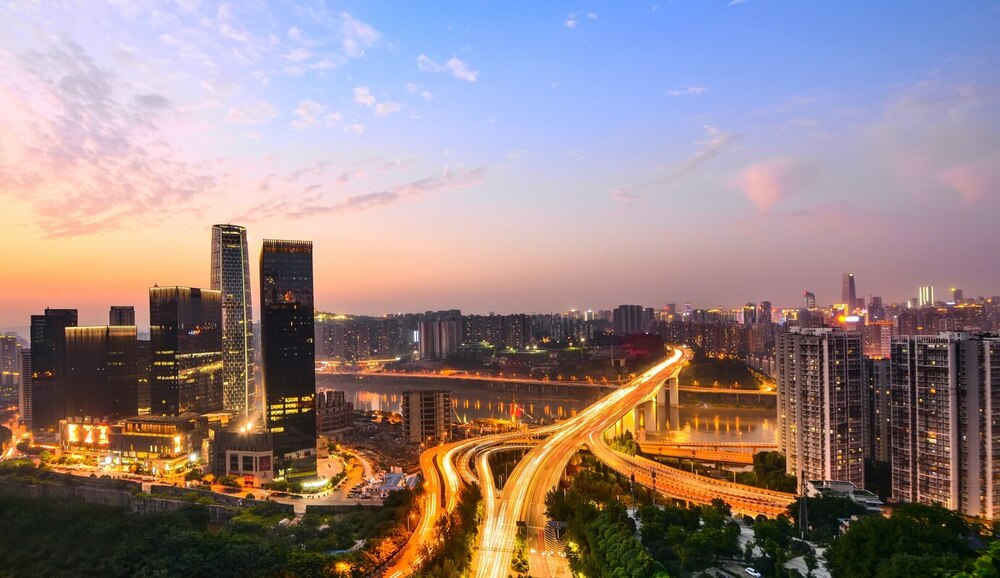
Streamlined foreign investment procedures
To set up operations, multinational companies in Vietnam typically go through two main legal processes:
- Investment Registration Certificate (IRC) – grants permission for foreign capital to be invested
- Enterprise Registration Certificate (ERC) – allows the legal entity to operate in Vietnam

Corporate Income Tax (CIT) Incentives
To encourage long-term investment, the Vietnamese government offers preferential tax rates for eligible projects, especially in:
- High-tech industries (e.g., Intel, Samsung)
- Export-oriented manufacturing in industrial parks or economic zones
- Research & development (R&D) and innovation centers
Typical CIT incentives for MNCs include:
- Tax exemption for 2–4 years
- 50% reduction for the following 4–9 years
- Reduced CIT rate of 10% or 15% for up to 15 years (standard rate is 20%)
These incentives make Vietnam highly competitive compared to regional peers like Thailand or Indonesia, helping mncs in Vietnam scale quickly while maintaining profitability.
Import duty exemptions and land lease support
Qualified multinational companies in Vietnam may also receive:
- Duty exemptions on imported machinery, raw materials, and components
- Land rent reductions or exemptions in certain economic or high-tech zones (e.g., Saigon Hi-Tech Park, Da Nang IT Park)
Such benefits not only reduce capital expenditure for new entrants but also encourage expansion from existing investors.
Growing middle class & consumption market
Beyond low-cost labor and strategic geography, one of the most powerful forces drawing multinational companies in Vietnam is the country’s expanding consumer market. With a fast-growing middle class and increasing disposable income, Vietnam is no longer just a production base—it’s becoming a major consumption hub in Southeast Asia.

Middle-class boom
According to World Bank projections, Vietnam’s middle class is expected to reach 56 million people by 2035, accounting for over half of the population. This rise in purchasing power is fueling demand for:
- Branded consumer goods
- Packaged food and beverages
- Electronics and personal tech
- Health, education, and financial services

Urbanization and lifestyle shifts
Rapid urban development has led to:
- The emergence of tier-2 cities (e.g., Da Nang, Can Tho) as new consumption centers
- Increased adoption of e-commerce, cashless payments, and digital services
- Greater focus on quality of life, wellness, and international brands
These lifestyle upgrades align well with the product offerings and positioning of mncs in Vietnam, enabling them to localize marketing while maintaining global standards.
Success stories from global brands
Several leading multinational companies in Vietnam have thrived by tapping into local consumer trends:
- Unilever and P&G dominate the personal care and household product segments
- Nestlé has launched localized products and wellness campaigns targeting health-conscious consumers
- Coca-Cola Vietnam has expanded its product line to meet local tastes, including teas and low-sugar drinks
Vietnam’s growing domestic market presents an increasingly attractive opportunity for MNCs in Vietnam not only to produce efficiently but also to sell and scale sustainably within the region.
Top 10 Multinational Companies in Vietnam in 2025
The growing presence of multinational corporations in Vietnam reflects the country’s appeal as a strategic destination for foreign investment, manufacturing, and market expansion. Below is a curated list of the most influential multinational companies in Vietnam, ranked based on their investment scale, brand presence, industry impact, and contribution to economic development.

Samsung Electronics Vietnam
Samsung Electronics is widely recognized as the most influential among all multinational corporations in Vietnam. Since establishing its first manufacturing plant in Bac Ninh in 2008, Samsung has continuously expanded, turning Vietnam into its largest global production base outside South Korea.
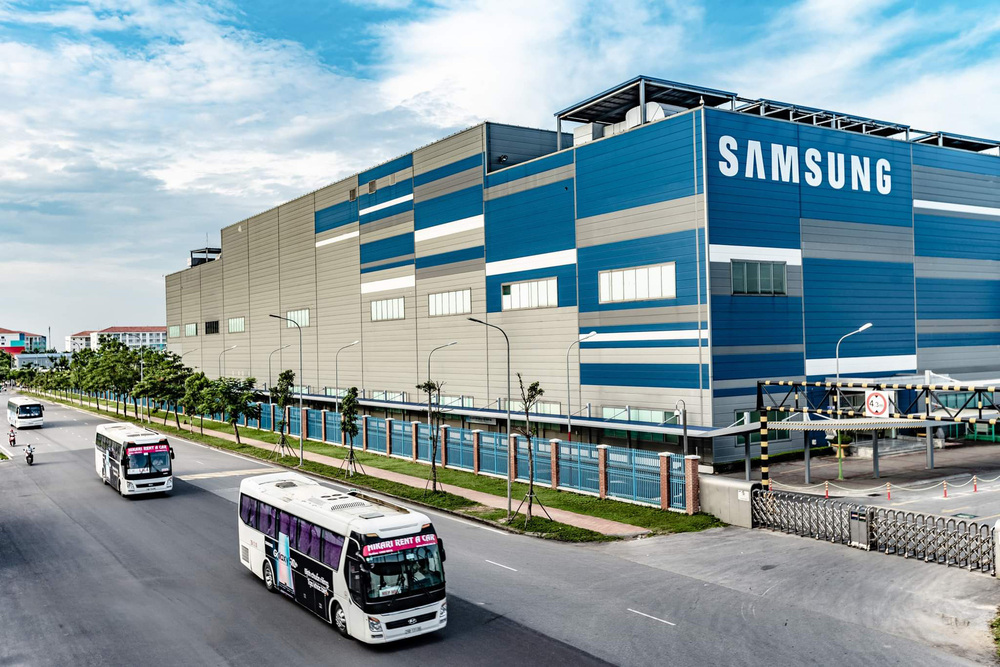
Massive investment & Export powerhouse
As of 2025, Samsung has invested more than $18 billion in Vietnam across multiple locations, including Bac Ninh, Thai Nguyen, and Ho Chi Minh City.
- Its factories are responsible for producing a significant share of Samsung’s global output of smartphones, tablets, and electronic components.
- Samsung alone contributes to nearly 20% of Vietnam’s total annual export value, making it the single largest exporter in the country.
Job creation and tech transfer
Samsung employs over 100,000 Vietnamese workers, not including its local suppliers and logistics partners.
- The company has invested in local talent through technical training programs and partnerships with Vietnamese universities.
- It has also established an R&D center in Hanoi, which is one of the largest in Southeast Asia, focusing on AI, 5G, and mobile technology.
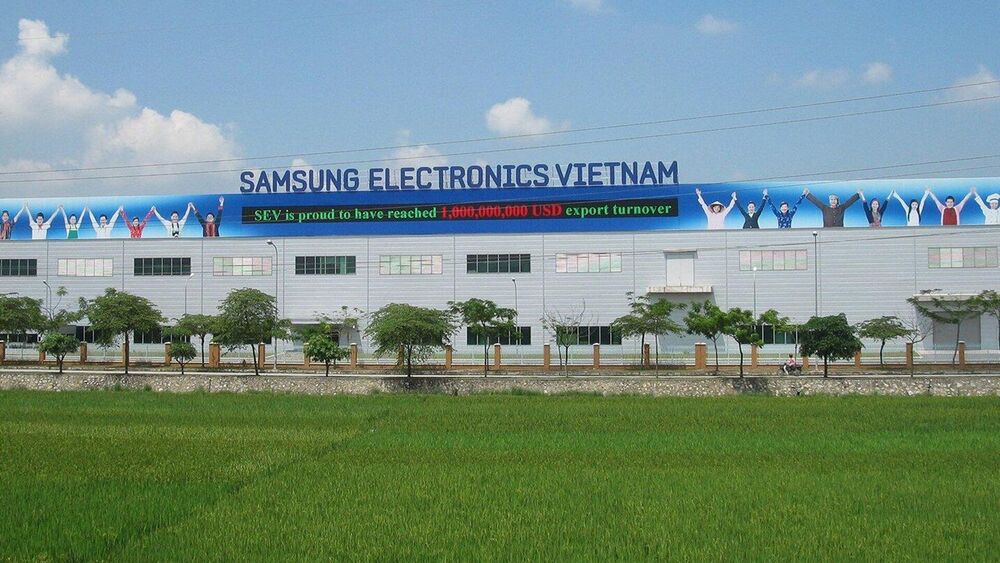
It has also helped attract other global tech giants to follow suit, positioning the country as a competitive hub in the global electronics supply chain.
Nestlé Vietnam
As one of the most established multinational companies in Vietnam, Nestlé has built a strong presence in both manufacturing and consumer engagement. Operating in Vietnam since 1995, the Swiss-based corporation has aligned its global vision with local market needs, especially in nutrition, sustainability, and health-focused product development.

Expansive manufacturing
Nestlé currently operates four factories in Vietnam, with major facilities located in Dong Nai and Hung Yen.
- Its total capital investment in the country exceeds $700 million, making it one of the top FMCG investors among all multinational corporations in Vietnam.
- The factories produce a wide range of products including Milo, Nescafé, Maggi, and infant nutrition lines—most of which are tailored to local tastes and dietary needs.
Commitment to local sustainability
Nestlé leads the way in sustainable agriculture, working with 20,000+ Vietnamese coffee farmers through its Nescafé Plan.
- The company promotes plastic reduction, water conservation, and renewable energy at its production sites.
- In 2024, Nestlé Vietnam was named one of the Top 100 Sustainable Companies in Vietnam, reflecting its long-term ESG focus.
With over 2,200 employees, Nestlé emphasizes talent localization, with most leadership positions held by Vietnamese professionals. The company actively engages in market research and product co-creation, making it one of the most adaptive mncs in vietnam to changing consumer behaviors.
Unilever Vietnam
Unilever is one of the earliest and most impactful multinational companies in Vietnam, having entered the market in 1995. With a robust portfolio of personal care, home care, and food products, Unilever has become a household name for millions of Vietnamese consumers.

Market leadership in FMCG
Unilever Vietnam owns a diverse brand portfolio including OMO, Sunsilk, Lifebuoy, Clear, P/S, Knorr, and Lipton.
- The company holds dominant market shares in several consumer categories such as laundry detergent, toothpaste, and shampoo.
- Its products are distributed across over 150,000 retail points nationwide, reaching both urban and rural populations.
Strategic investment & Local operations
- The company operates two modern manufacturing sites in Ho Chi Minh City and Bac Ninh, alongside a nationwide logistics and sales network.
- Unilever has invested over $300 million into Vietnam since its entry, establishing it as a benchmark among other multinational corporations in Vietnam.
Sustainability & Social impact
- It has also implemented plastic waste reduction programs and joined global ESG efforts, in line with its mission of “making sustainable living commonplace.”
- In 2023, Unilever Vietnam was recognized among the Best Places to Work and Top 10 Sustainable Businesses in Vietnam.
Employing around 1,500 people, the company is known for cultivating local leadership, inclusive workplace culture, and strong employer branding—attributes that attract top talent and reinforce its position as one of the most desirable mncs in Vietnam.

Intel Vietnam
Intel Products Vietnam is a key player among high-tech multinational corporations in Vietnam, operating the largest assembly and testing facility in Intel’s global network. The company’s long-term investment has positioned Vietnam as an integral part of the global semiconductor supply chain.

Strategic manufacturing hub
Intel Vietnam began operations in Saigon Hi-Tech Park (SHTP) in Ho Chi Minh City in 2006.
- With an investment of over $1.5 billion, it is Intel’s single largest investment in Southeast Asia.
- The 46,000 sqm factory specializes in assembly, testing, and production of microprocessors and chipsets, supplying key markets worldwide.
Technology transfer and R&D integration
Intel’s presence catalyzes Vietnam’s growth in high-tech manufacturing and innovation.
- It supports local supplier development, introduces global quality standards, and strengthens Vietnam’s role in the global semiconductor value chain.
- The company also collaborates with local universities through programs like the Intel Vietnam Engineering Scholarship, nurturing future tech talent.
Intel Vietnam employs over 2,800 workers, with a strong focus on building a skilled and gender-inclusive workforce—women account for more than 50% of production staff. The facility is among the most advanced operated by mncs in vietnam, contributing significantly to export revenue and the development of Vietnam’s digital economy.
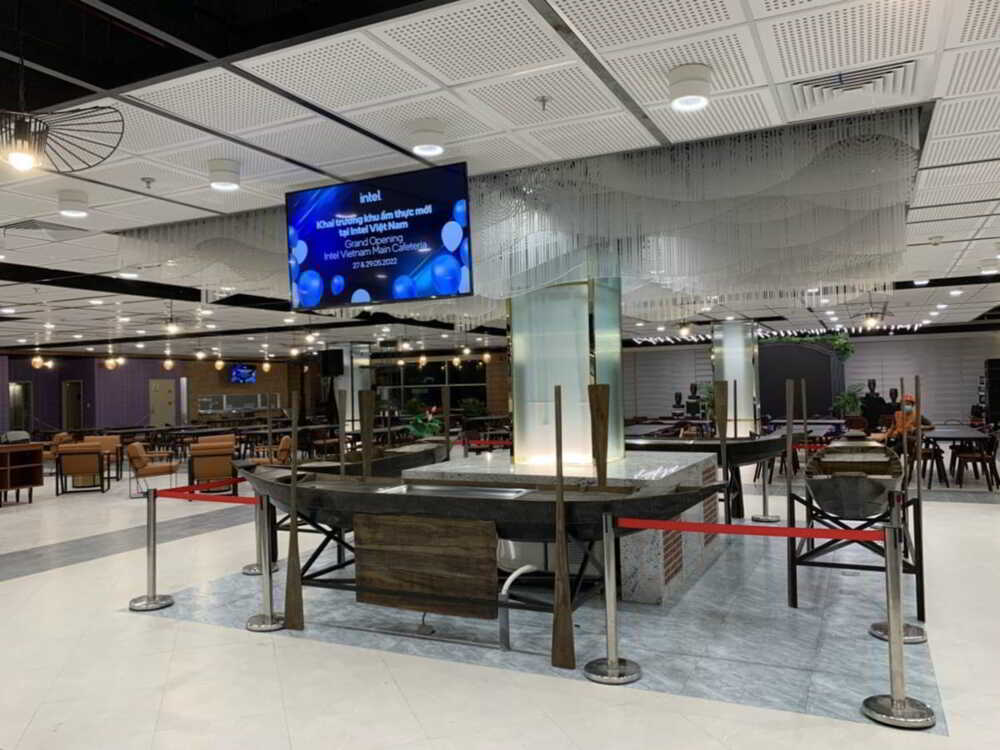
Honda Vietnam
As a leading name in the automotive and motorbike industry, Honda Vietnam stands out among the most successful multinational companies in Vietnam. Established in 1996 as a joint venture between Honda Motor Co. (Japan), Asian Honda Motor (Thailand), and a Vietnamese state-owned partner, Honda has grown into a household brand with deep roots in both production and market share.

Dominant market presence in motorcycles
- Honda holds more than 75% market share in Vietnam’s motorcycle segment, with popular models like Wave, Vision, Winner X, and SH Mode.
- Since its inception, Honda Vietnam has sold over 35 million motorbikes, serving both domestic and export markets across Asia.
Strong manufacturing capacity
- The company operates three large manufacturing plants in Vinh Phuc and Ha Nam provinces, producing both motorcycles and automobiles.
- Honda also runs a Research & Development Center to adapt designs and specifications to the Vietnamese market.
Sustainability and safety advocacy
- Honda Vietnam actively promotes traffic safety education, environmental protection, and fuel-efficient technologies.
- In 2023, it launched several campaigns under its “Green Dealer” and “Eco Driving” initiatives, aligning with Vietnam’s sustainable mobility goals.
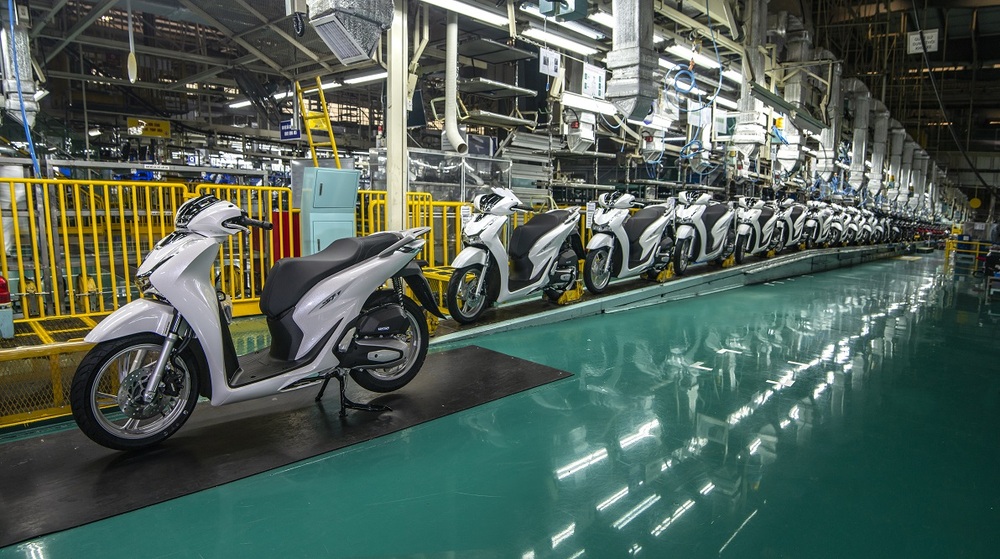
LG Display
LG Display Vietnam represents a significant force among high-tech multinational corporations in Vietnam, specializing in the manufacturing of advanced display panels for global electronics giants. As a key subsidiary of LG Group (South Korea), the company has made strategic investments that position Vietnam as a core part of its global supply chain.
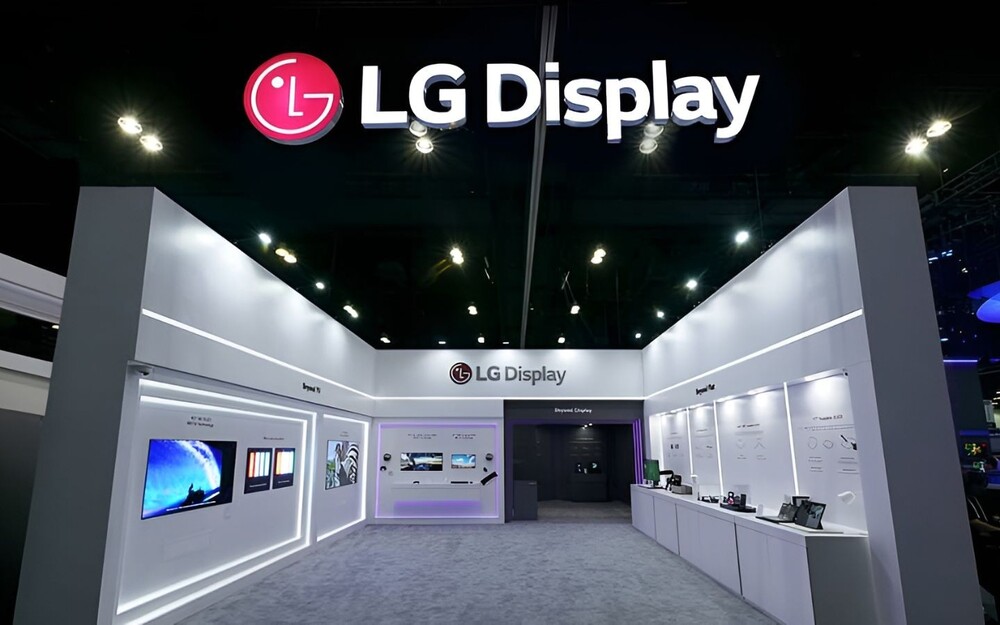
High-value investment in northern Vietnam
- LG Display began operations in Trang Due Industrial Park, Hai Phong in 2016.
- By 2025, its total registered capital has exceeded $4.6 billion, making it one of the largest foreign-invested projects in northern Vietnam.
- The facility produces OLED and LCD panels for smartphones, tablets, TVs, and automotive displays.
Driving technology transfer & Skilled labor demand
- LG Display’s factory operates with highly automated production lines and advanced cleanroom technology.
- The company directly employs over 8,000 workers and contributes to upskilling Vietnam’s labor force in electronics, automation, and precision manufacturing.
- It also supports local supply chains, working with Vietnamese vendors in materials, logistics, and technical maintenance.
As one of the leading multinational companies in Vietnam in the electronics sector, LG Display plays a vital role in helping Vietnam move up the value chain—from low-cost assembly to high-tech component manufacturing.
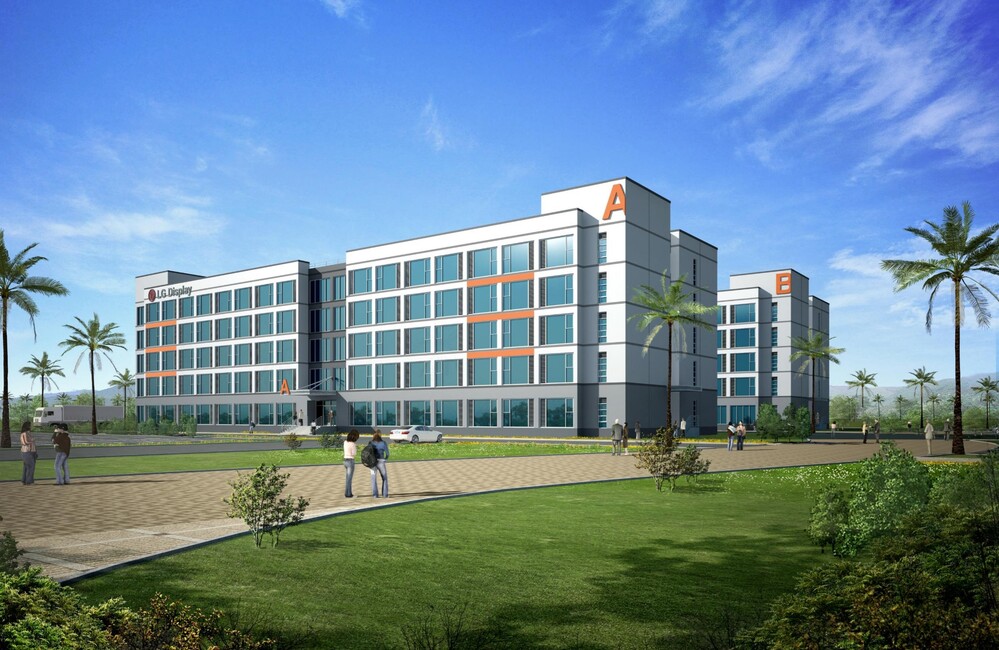
Deloitte Vietnam
Deloitte Vietnam is one of the most prominent professional services firms among all multinational companies in Vietnam, offering high-level expertise in audit, tax, legal, risk, and financial advisory. As part of the global Deloitte network with presence in over 150 countries, the Vietnam branch brings world-class advisory services to both local and international clients.
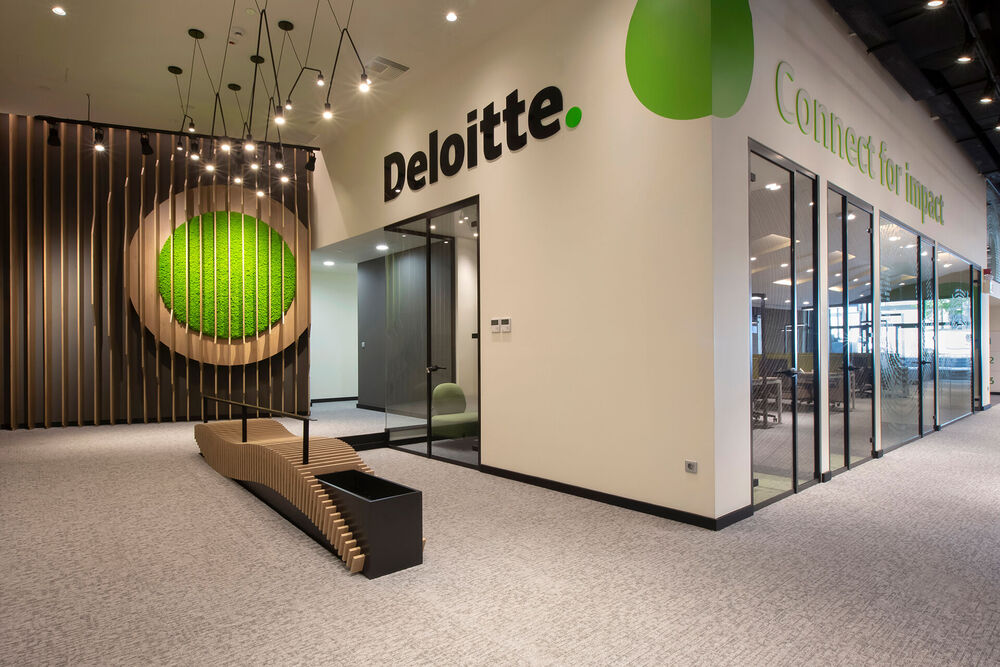
Early market entry & Professional excellence
- Deloitte was the first international accounting firm to operate in Vietnam, originally founded in 1991 as a joint venture and fully rebranded under Deloitte in 2007.
- The firm now employs over 1,500 professionals across Hanoi and Ho Chi Minh City, serving clients in industries including banking, real estate, manufacturing, and public sector.
Thought leadership & Corporate governance
- Deloitte Vietnam has led numerous consulting initiatives on ESG, digital transformation, and enterprise risk management, supporting Vietnam’s evolving regulatory and economic landscape.
- The company publishes regular market insights, whitepapers, and participates in policy dialogues with ministries and international organizations.
As one of the few mncs in vietnam offering strategic financial and operational guidance, Deloitte is a trusted advisor to foreign investors and large local corporations alike. The firm plays a vital role in supporting FDI compliance, M&A advisory, IPO preparation, and sustainability reporting—critical functions for any business scaling in Vietnam.
Coca-Cola Vietnam
As a global beverage powerhouse, Coca-Cola is among the most visible and well-established multinational companies in Vietnam, with a strong presence in both production and community engagement. Since entering the market in 1994, Coca-Cola has continuously adapted its portfolio to local tastes while investing in sustainable development and brand loyalty.
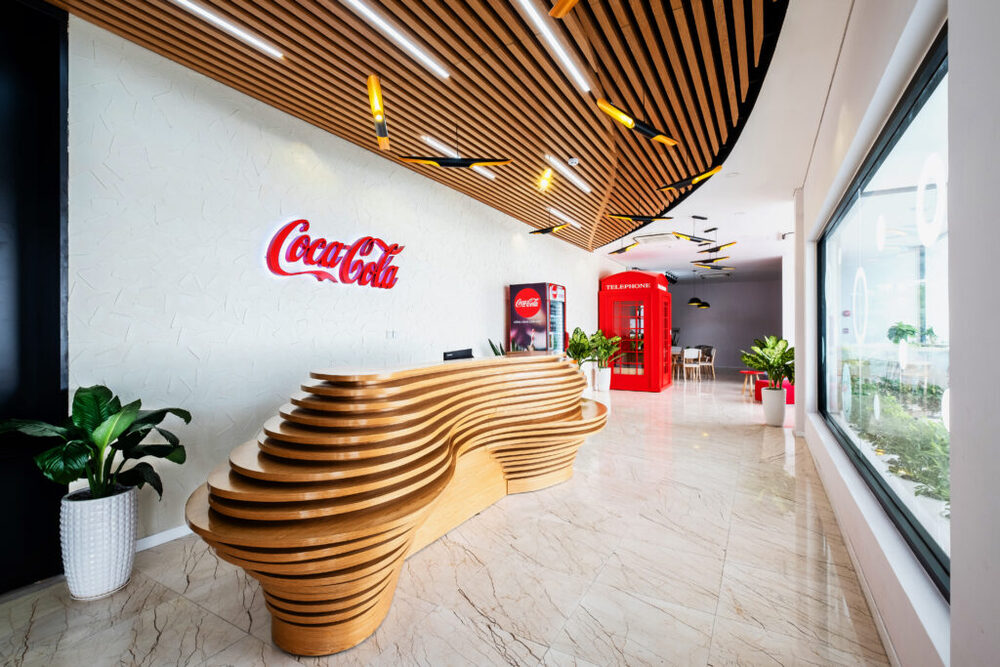
Coca-Cola is a multinational company that is very famous in Vietnam, with a strong presence in both production and community activities
Expanding local operations
Coca-Cola Vietnam operates three major bottling plants located in Ho Chi Minh City, Da Nang, and Hanoi.
- The company has invested over $1 billion in Vietnam as of 2025, including logistics, warehousing, and digital transformation efforts to improve distribution efficiency.
- Its local product line includes not only global icons like Coca-Cola, Fanta, and Sprite, but also regionally adapted beverages such as Minute Maid Teppy, Samurai, and Dasani mineral water.
Sustainability and community impact
Coca-Cola Vietnam has implemented several ESG-focused programs, such as:
- “Zero waste to nature” initiative for plastic collection and recycling
- Community clean water access and women’s empowerment projects
- Energy-saving and carbon reduction technologies in all plants
These efforts reflect the company’s goal to be one of the most responsible multinational corporations in Vietnam.

Bosch Vietnam
Bosch is a prime example of how high-tech multinational companies in Vietnam are not only investing in manufacturing but also in engineering innovation and digital transformation. With a wide range of operations covering automotive technologies, industrial solutions, consumer goods, and software engineering, Bosch has steadily expanded its footprint in Vietnam since 2008.

Diverse and scalable operations
Bosch Vietnam’s operations span three major divisions:
- Manufacturing plant in Dong Nai producing push belts for continuously variable transmissions (CVT)
- Software & Engineering R&D center (Robert Bosch Engineering Vietnam) in Ho Chi Minh City – one of the largest Bosch centers outside Germany
- Sales and after-sales services for power tools, security systems, and building technologies
The company has invested over $300 million and employs more than 4,000 professionals nationwide.
Pioneer in software & Digital engineering
- Bosch’s Engineering Center Vietnam (ECV) is a critical hub for embedded software development, artificial intelligence (AI), and Internet of Things (IoT).
- It provides solutions for the automotive, smart home, and industrial automation sectors across the Asia-Pacific region.
This tech-forward approach sets Bosch apart from other traditional multinational corporations in Vietnam, as it actively shapes Vietnam’s digital economy through R&D and innovation.
Procter & Gamble (P&G) Vietnam
Procter & Gamble (P&G) is a global leader in consumer goods and one of the most successful multinational companies in Vietnam, known for its strong brand portfolio and commitment to quality, sustainability, and local community development.
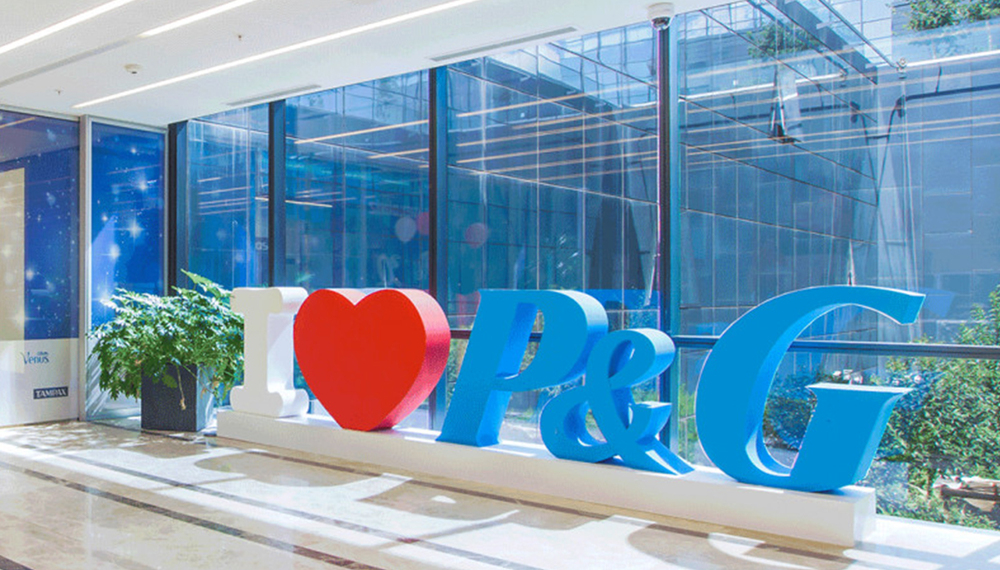
Established presence in the Vietnamese market
- P&G Vietnam was established in 1995, and its head office is located in Ho Chi Minh City.
- The company operates a state-of-the-art manufacturing plant in Binh Duong Province, serving both the domestic market and exports to ASEAN countries.
- Its major brands in Vietnam include Pampers, Ariel, Tide, Downy, Head & Shoulders, Pantene, and Gillette.
Investing in local growth and sustainability
- P&G has invested over $300 million in Vietnam to date, focusing on automation, sustainable packaging, and green production practices.
- The company’s Binh Duong plant was among the first in the country to adopt zero waste to landfill operations and energy-saving systems.
- It also supports women’s empowerment, disaster relief, and sanitation access projects across Vietnamese communities.
With a strong presence in modern trade and e-commerce channels, P&G continues to be a top performer among multinational corporations in Vietnam.
Economic contributions of MNCs in Vietnam
The growing presence of multinational corporations in Vietnam has significantly reshaped the country’s economy over the past two decades. From foreign direct investment to job creation and technology transfer, mncs in vietnam have played a central role in Vietnam’s transformation into a dynamic manufacturing and consumption hub.

FDI value & tax contribution
One of the most substantial contributions of multinational corporations in Vietnam lies in their consistent and large-scale foreign direct investment (FDI). Over the last two decades, MNCs have injected billions of dollars into Vietnam’s economy, fueling industrialization, infrastructure development, and export growth.
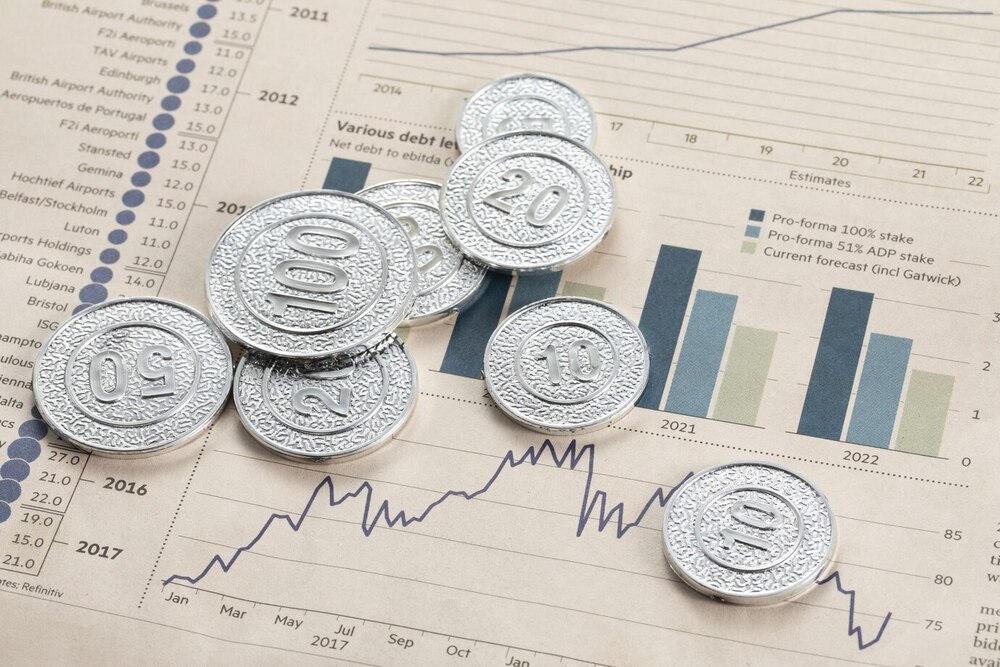
According to the Ministry of Planning and Investment (MPI), foreign-invested enterprises (FIEs), most of which are mncs in vietnam, contribute approximately:
- 55% of total industrial production
- 70% of total export value
- 25% of Vietnam’s GDP
By the end of 2024, accumulated FDI capital in Vietnam had exceeded $450 billion, with South Korea, Singapore, Japan, and the U.S. as leading contributors.
Beyond capital, multinational companies in Vietnam significantly contribute to national revenue through:
- Corporate Income Tax (CIT)
- Value-Added Tax (VAT)
- Import–Export duties
- Environmental and special consumption taxes
In 2023, foreign-invested firms accounted for over 33% of total corporate tax revenue in Vietnam, supporting infrastructure, education, and healthcare projects.
In short, the steady flow of FDI and tax payments from mncs in vietnam provides financial stability for the government while reinforcing Vietnam’s attractiveness as a long-term investment destination.
Employment generation
One of the most visible and impactful contributions of multinational companies in Vietnam is their role in creating employment opportunities across sectors—from manufacturing and logistics to professional services and high-tech engineering.

Direct job creation at scale
As of 2024, foreign-invested enterprises (FIEs), including top mncs in vietnam, directly employ more than 5 million Vietnamese workers, according to data from the General Statistics Office.
Key employers include:
- Samsung: Over 100,000 employees across Bac Ninh, Thai Nguyen, and Hanoi
- Honda Vietnam: 12,000+ workers in manufacturing, sales, and service
- Bosch Engineering Center: 4,000+ professionals in R&D and software
- Nestlé & Unilever: Thousands working in FMCG production, distribution, and marketing
These companies not only offer stable jobs but also introduce international HR practices, structured career paths, and comprehensive employee benefits.
Workforce development and upskilling
Many multinational corporations in Vietnam invest heavily in training, localization of management roles, and technical development:
- Intel and LG collaborate with Vietnamese universities to develop talent pipelines in engineering and IT
- Deloitte and P&G implement global leadership programs to nurture local executives
- English fluency, digital literacy, and lean manufacturing are standard skill sets acquired in MNC environments

Export impact
Vietnam’s position as a global manufacturing and export hub has been largely driven by the operations of major multinational corporations in Vietnam.
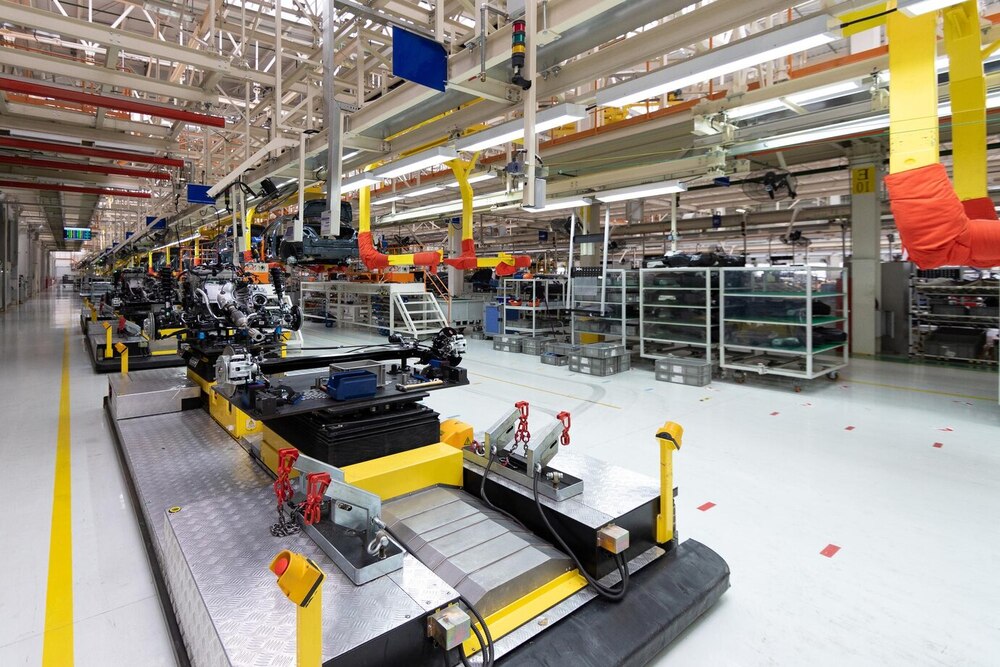
Export-led growth fueled by MNCs
According to the General Statistics Office (GSO), foreign-invested enterprises—primarily mncs in vietnam—account for approximately:
- 70% of Vietnam’s total export turnover
- Nearly 100% of exports in key industries like electronics, mobile phones, and semiconductors
Strengthening global trade integration
Thanks to the export performance of MNCs, Vietnam has:
- Achieved multiple years of trade surplus despite global headwinds
- Become a critical node in the global supply chain, especially for the U.S., EU, and Northeast Asian markets
- Enhanced its role in free trade agreements (FTAs), including EVFTA, CPTPP, and RCEP
With their scale, logistics infrastructure, and global customer base, multinational corporations in Vietnam have not only transformed export volumes but also elevated standards in compliance, traceability, and product quality.
Local SME supply chain development
Beyond direct investments and exports, multinational companies in Vietnam play a vital role in developing Vietnam’s local business ecosystem—particularly through the formation and growth of small and medium-sized enterprises (SMEs) in their supply chains.

Fostering domestic supplier networks
Many mncs in vietnam operate with localization targets, aiming to source materials, components, and services from Vietnamese partners. This creates significant opportunities for:
- Parts manufacturers and assembly vendors
- Logistics, warehousing, and last-mile delivery firms
- Maintenance, quality control, and packaging providers
For example:
- Samsung collaborates with over 50 Tier-1 Vietnamese suppliers, and indirectly supports hundreds of local Tier-2/Tier-3 vendors.
- Nestlé and Unilever rely on domestic SMEs for distribution, merchandising, and material supply.
- Intel Vietnam runs technical assistance programs to help local vendors meet international standards.
Capacity building and compliance training
To ensure supply chain consistency, multinational corporations in Vietnam offer capacity-building support such as:
- Lean manufacturing workshops
- Training on ISO certifications, EHS (Environment, Health, Safety), and traceability
- Financial support or long-term contracts that improve SME creditworthiness
This enables local suppliers to grow sustainably and become part of the global value chain.

Challenges multinational companies face in Vietnam
Despite Vietnam’s growing appeal as a strategic investment destination, multinational companies in Vietnam still face several operational, legal, and cultural challenges. Understanding these obstacles is essential for long-term success and risk management, particularly for firms entering the market for the first time.

Legal complexity & licensing (IRC/ERC, CIT)
Although Vietnam has made strides in simplifying its business environment, legal procedures and regulatory inconsistencies remain a core challenge for many multinational companies in Vietnam, particularly in their early investment phases.
Understanding the Two-tier licensing system
Foreign-invested enterprises (FIEs), including mncs in vietnam, must typically go through a two-step licensing process:
- Investment Registration Certificate (IRC): Grants permission to invest capital and defines the project scope
- Enterprise Registration Certificate (ERC): Legally establishes the entity and allows it to operate as a business
While these processes are standardized under the Law on Investment (2020), delays may occur due to:
- Varying interpretations of laws across provinces
- Sector-specific restrictions (e.g., education, real estate, pharmaceuticals)
- Frequent legal updates without timely guidance or transitional provisions
Corporate Income Tax (CIT) complexities
Vietnam’s standard CIT rate is 20%, but multinational corporations in Vietnam often face additional complexity due to:
- Different rates or incentives depending on the industry or location
- Complicated criteria for applying CIT holidays (e.g., 2–4 years exemption, 50% reduction thereafter)
- Ambiguities in tax deductibility rules, especially for intercompany charges or management fees

Navigating policy shifts & Compliance risks
Policy changes—sometimes unannounced—can affect sectors such as:
- Renewable energy
- E-commerce & data localization
- Real estate development
- Import–export licensing & VAT refund delays
This creates uncertainty and increases the cost of compliance for multinational companies in Vietnam, especially those in highly regulated or capital-intensive sectors.
Cultural adaptation & management style
Cultural nuances and differences in leadership philosophy often present hidden—but critical—challenges for multinational companies in Vietnam, especially in the areas of communication, decision-making, and employee engagement.

Contrasts in organizational culture
Many mncs in vietnam operate with Western or East Asian corporate structures, which may differ significantly from local expectations in Vietnam:
- Western MNCs emphasize direct communication, individual accountability, and flat hierarchies
- Vietnamese workplaces tend to value indirect communication, harmony, seniority, and consensus-driven decisions

Leadership & Delegation styles
- Top-down leadership is common in global corporations, but may face passive resistance if not paired with localized team alignment.
- Employees in Vietnam may hesitate to speak up in meetings or challenge authority, which can be misinterpreted as a lack of initiative.
- Conversely, managers unfamiliar with Vietnamese business etiquette may unintentionally overlook important relational norms—such as respect for hierarchy, group cohesion, and saving face.
Bridging the gap through localization
To succeed long-term, multinational corporations in Vietnam need to:
- Invest in cross-cultural training for both expatriates and local staff
- Promote bilingual leadership and culturally agile managers
- Balance global standards with local autonomy and contextual sensitivity

Talent retention & infrastructure constraints
As Vietnam continues to attract more FDI, the country faces increasing pressure to support the long-term operations of multinational companies in Vietnam—particularly in two critical areas: skilled workforce retention and modern infrastructure.

Talent retention challenges
While Vietnam boasts a young and dynamic labor force, many mncs in vietnam struggle to retain experienced, mid-to-senior level professionals, especially in:
- Technology and software engineering
- Finance, supply chain, and compliance
- R&D and digital transformation
Common reasons for high turnover include:
- Salary competition from other foreign employers and tech startups
- Limited leadership development pipelines
- Gaps in soft skills, English proficiency, or international working style adaptation
To address this, leading multinational corporations in Vietnam are:
- Offering structured career paths and training programs
- Creating strong employer branding and purpose-driven workplace cultures
- Investing in partnerships with universities and technical institutes
Infrastructure limitations
While Vietnam’s infrastructure has improved rapidly, key bottlenecks remain that impact business efficiency:
- Port congestion in Hai Phong and Cat Lai
- Road and rail logistics that delay interprovincial freight movement
- Power grid pressure in industrial parks during peak demand seasons
- Digital infrastructure gaps, especially outside Tier 1 cities
These issues can hinder mncs in vietnam from achieving just-in-time supply chain models or scaling advanced manufacturing capabilities.

Future outlook: Trends for mncs in Vietnam [2025–2030]
As Vietnam moves into a new phase of economic development, multinational companies in Vietnam are expected to play an even more strategic role in driving innovation, sustainability, and regional competitiveness. Between 2025 and 2030, several key trends will define how mncs in vietnam operate, invest, and expand.
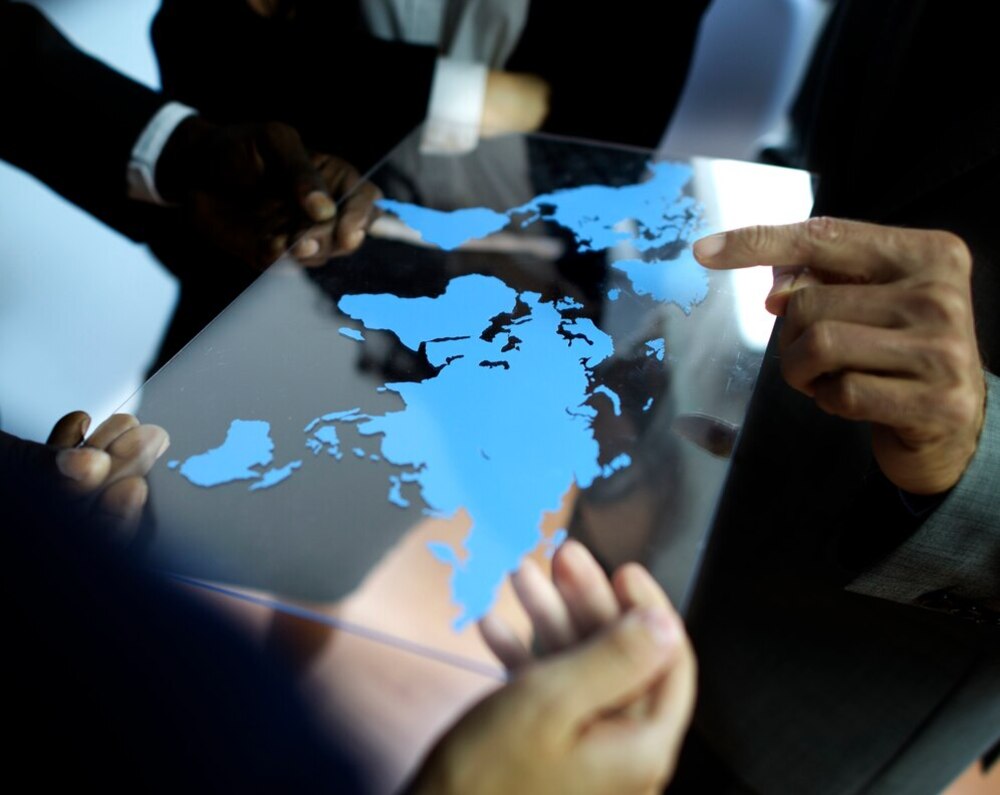
China +1 strategy and regional relocation
As global supply chains shift to become more resilient and diversified, the China +1 strategy has emerged as a critical driver of investment into Southeast Asia—placing Vietnam at the center of attention for many multinational companies in Vietnam.
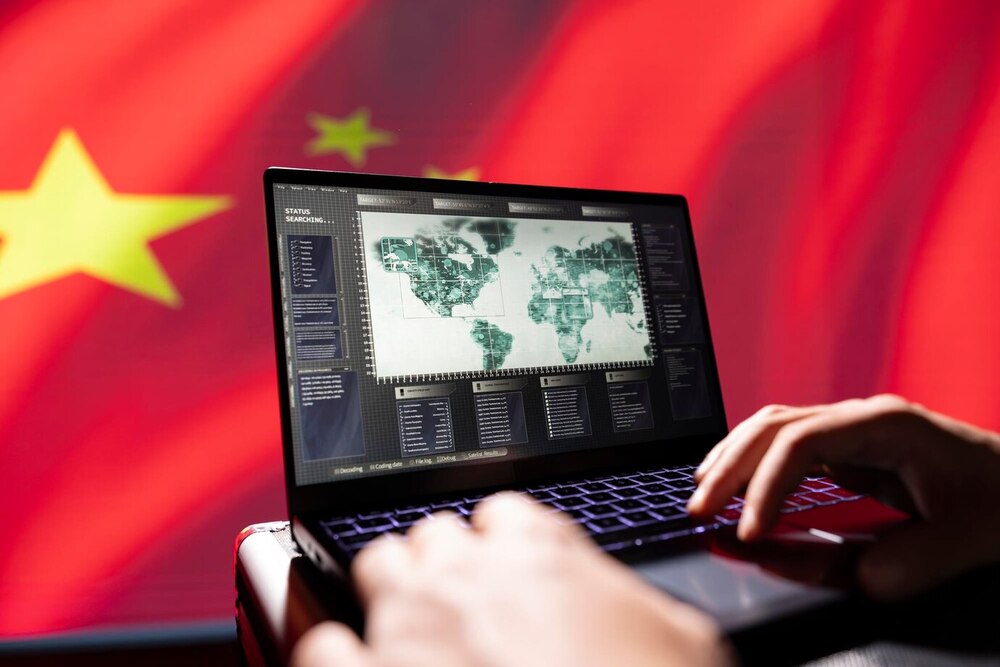
The China +1 strategy refers to the growing trend of multinational corporations reducing overreliance on China by establishing parallel operations in at least one other country—often Vietnam, India, or Indonesia.
Motivations behind this shift include:
- Rising labor and land costs in China
- Geopolitical tensions and trade restrictions (e.g., U.S.-China tariffs)
- Desire for supply chain diversification and risk mitigation
Vietnam is preferred for this program because Vietnam has always been the top choice for multinational companies:
- Proximity to China, making supply chain integration smoother
- Competitive labor costs and abundant workforce
- Extensive trade agreements (CPTPP, EVFTA, RCEP)
- Political stability and consistent FDI-friendly policies
Major relocations and expansions include:
- Samsung shifting core manufacturing from China to Thai Nguyen and Bac Ninh
- Apple suppliers like Foxconn, Luxshare, Pegatron expanding production in Bac Giang and Quang Ninh
- Lego and Bosch increasing investment in green and high-tech facilities in southern Vietnam
To contribute to the regional economy, Vietnam is accelerating development of:
- Tier-2 industrial zones in Thanh Hoa, Binh Phuoc, Long An, and Da Nang
- Improved infrastructure (expressways, ports, and smart logistics hubs)
- Digital administration for faster licensing and customs processing
This makes Vietnam not just a backup to China—but a strategic long-term hub for multinational corporations in Vietnam aiming to serve global markets.
Shift to ESG, green factory initiatives
Sustainability is becoming a strategic imperative for multinational companies in Vietnam, as global stakeholders, investors, and governments demand stronger Environmental, Social, and Governance (ESG) commitments. From 2025 onward, Vietnam is expected to witness a surge in green factory investments and ESG-aligned operational models among foreign-invested enterprises.

ESG is a priority for mncs in Vietnam
Many global brands now tie their investment decisions to ESG performance, including:
- Carbon neutrality goals by 2030–2040
- Sustainable sourcing and circular economy compliance
- Meeting reporting requirements under frameworks like GRI, SASB, and EU Taxonomy
Multinational corporations in Vietnam are under increasing pressure to:
- Decarbonize operations
- Ensure labor rights and diversity compliance
- Maintain transparent ESG reporting to international standards
Green factory models gain momentum
Several mncs in vietnam are leading the way in building and operating green-certified facilities:
- Lego Vietnam: Constructing a $1.3 billion carbon-neutral factory in Binh Duong using solar power
- Unilever & Nestlé: Operating zero-waste-to-landfill production sites with water recycling systems
- Bosch and Samsung: Incorporating renewable energy and smart grid integration into industrial campuses

Vietnam’s regulatory push for ESG
The Vietnamese government is:
- Requiring ESG disclosures for listed companies from 2025
- Offering tax incentives and land lease support for eco-industrial zones
- Promoting green bonds and climate finance aligned with international commitments (e.g., COP26, Just Energy Transition Partnership – JETP)
This regulatory alignment makes Vietnam an attractive destination for multinational companies aiming to meet global ESG targets while benefiting from local support.
Expansion beyond HCMC/Hanoi (Da Nang, Binh Duong, Bac Ninh)
While Ho Chi Minh City and Hanoi remain Vietnam’s top-tier business centers, the next wave of growth among multinational companies in Vietnam is moving toward regional cities and emerging industrial hubs. The decentralization trend reflects the need for lower operational costs, infrastructure capacity, and government-backed industrial expansion.
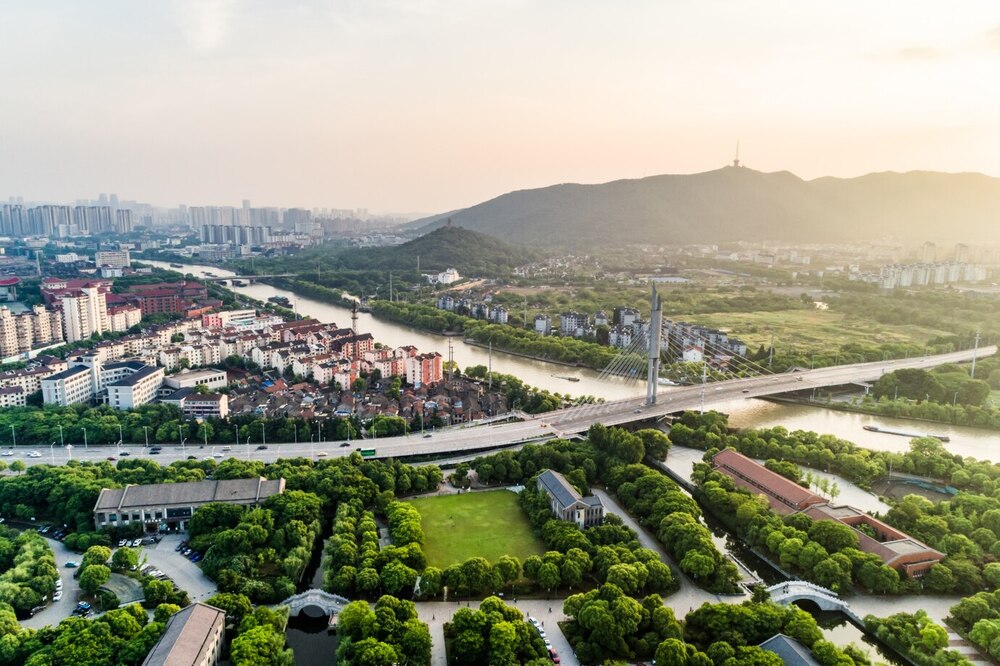
MNCs are tending to move out of big cities because they are facing problems:
- Rising land and labor costs in Hanoi and HCMC
- Industrial congestion and real estate limitations
- Strategic needs for supply chain diversification and proximity to ports
In response, many are relocating or expanding into satellite provinces and Tier-2 cities.
Key destinations leading the shift
- Binh Duong (Southern Vietnam)
- Hosts major projects from P&G, LEGO, Tokyu, and Frasers Property
- Known for its VSIP (Vietnam Singapore Industrial Park) model
- Excellent connectivity to Cat Lai Port and Ho Chi Minh City
- Focus on smart city development and green manufacturing
- Bac Ninh & Bac Giang (Northern Vietnam)
- Epicenter for electronics and high-tech manufacturing
- Home to Samsung, Foxconn, Canon, Luxshare, and dozens of suppliers
- Close proximity to Hanoi, Noi Bai Airport, and Hai Phong Port
- Strong infrastructure and skilled labor supply
- Da Nang (Central Vietnam)
- Gaining traction as a tech and innovation center
- Attracting IT, data center, and tourism-related mncs
- Well-developed infrastructure with an international airport and seaport
- Ideal for regional R&D or service hubs serving central Vietnam and ASEAN markets
In addition, mncs are also encouraged and supported by the government to invest in infrastructure:
- Special economic zones, tax incentives, and smart industrial park models
- Investments in expressways, airports (e.g., Long Thanh, Chu Lai), and inland ports
- Digitalization of administrative procedures in provinces like Binh Duong and Bac Ninh
As infrastructure and policy maturity spreads, more multinational corporations in Vietnam will choose to diversify beyond Hanoi and HCMC, tapping into localized labor pools and long-term cost efficiency.
FAQs about multinational companies in Vietnam
With the growing presence of multinational companies in Vietnam, many professionals, investors, and students have questions about their operations, workplace culture, and economic role. Below are answers to some of the most frequently asked questions regarding mncs in vietnam—from how to join them to how they impact the broader economy.
How to apply for jobs at multinational companies in Vietnam?
To apply for jobs at multinational companies in Vietnam, you can follow these steps:
- Visit official company websites (e.g., careers pages of Samsung, Nestlé, Unilever)
- Explore global recruitment platforms such as LinkedIn, Glassdoor, VietnamWorks, or TopCV
- Attend career fairs, especially those organized by foreign chambers of commerce or international universities
- Prepare a professional CV in English, highlighting soft skills, certifications, and international experience (if any)
- Tailor your application to the company’s core values and demonstrate cultural fit with MNC environments

Are MNCs better to work for than local firms?
Working at multinational corporations in Vietnam offers several advantages, though it depends on career goals and industry preferences:
| Multinational companies | Local firms |
| Global standards, structured training, and stable salary | Faster promotion, higher flexibility |
| Exposure to international projects & cross-border collaboration | Strong local market insights and relationship-based culture |
| English-speaking environment, professional branding | Greater autonomy, startup mindset |
That said, many professionals value the structured career development, international exposure, and benefits provided by mncs in vietnam, particularly in sectors like tech, FMCG, consulting, and manufacturing.
How do MNCs contribute to Vietnam’s economy?
Multinational companies in Vietnam play a foundational role in the country’s economic development. Their key contributions include:
- FDI inflows: MNCs account for over 70% of Vietnam’s exports and ~25% of national GDP
- Job creation: Millions of direct and indirect jobs across industries
- Technology transfer: Bringing advanced manufacturing, automation, and R&D capabilities
- Supply chain development: Supporting growth of Vietnamese SMEs through localization
- Tax contributions: Corporate taxes, VAT, and duties forming a significant portion of government revenue
In essence, mncs in vietnam are growth enablers—bridging Vietnam with the global economy and accelerating industrial modernization.
With Vietnam’s economic momentum and strategic advantages, mncs in vietnam are set to grow even stronger in the coming years. The presence of leading multinational companies in vietnam not only transform industries but also position Vietnam as a critical player in the global economy.



